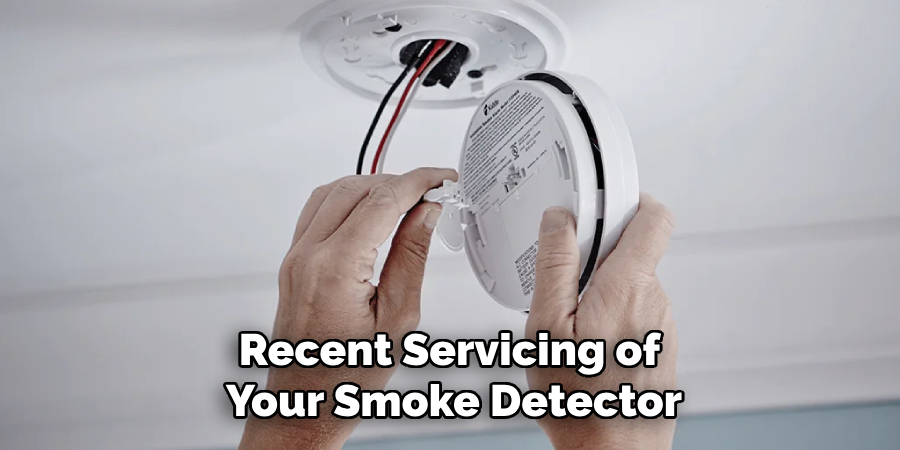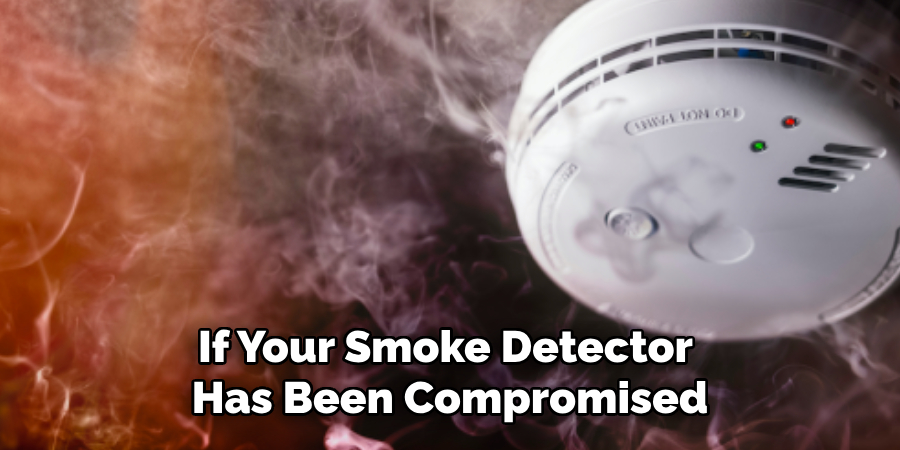Smoke detectors are essential safety devices in our homes, designed to alert us to the presence of smoke and potential fires. However, in recent years, concerns have been raised about the possibility of these life-saving devices being tampered with for surveillance purposes. While it may sound like a plot from a spy movie, there have been cases where hidden cameras or microphones have been

placed within smoke detectors to monitor unsuspecting individuals. This introduction will explore how to tell if your smoke detector is bugged, arming you with the knowledge to protect your privacy while maintaining essential home safety.
Importance of Understanding Potential Security Threats
Understanding potential security threats in today’s digital age is crucial for safeguarding your privacy and personal information. With technology becoming increasingly embedded in our daily lives, there is a greater risk of unauthorized surveillance and hacking. By being aware of these threats, you can take proactive measures to protect your home and personal data. Knowledge of potential
vulnerabilities, such as bugged smoke detectors, empowers you to inspect devices and identify any anomalies that might indicate tampering. Staying informed about emerging security risks not only helps prevent unwanted intrusions but also ensures that your environment remains both safe and secure.
Signs Your Smoke Detector Could Be Bugged
When it comes to identifying a potentially bugged smoke detector, several signs may indicate tampering. First, examine the device closely for any unfamiliar or new components, such as extra wires or lenses that were not part of the original design. This could be a telltale sign that a hidden camera or microphone has been installed. Additionally, listen for any unusual noises, such as clicks or buzzing, which may suggest electronic interference typical of surveillance devices. Any
recent servicing of your smoke detector by unknown personnel should also raise a red flag, as this could provide an opportunity for tampering. It is also worth monitoring whether the smoke detector seems unusually active, such as blinking lights or frequent false alarms, which could imply altered functionality. Always ensure that you remain vigilant and regularly inspect these devices for anything out of the ordinary.

10 Methods How to Tell if Your Smoke Detector Is Bugged
1. Examine the Physical Appearance Closely
The first and easiest step is to inspect the smoke detector’s appearance carefully. Look for any signs that it has been tampered with. Pay attention to screws that look newly disturbed, seams that seem out of place, or any additional parts that weren’t originally part of the device. A genuine smoke detector should have a standard, uniform design, but one that has been modified for surveillance might
have extra openings, lenses, or non-standard buttons. Additionally, check for unusual wires or components visible through the vents or casing. Surveillance devices often need additional wiring or sensors that won’t be present in a regular detector.
2. Listen for Unusual Sounds
Bugging devices can sometimes emit faint noises, particularly if they are poorly installed or malfunctioning. Place your ear close to the smoke detector and listen carefully for any strange buzzing, clicking, or humming sounds. While some electronic devices might emit a slight hum, it’s unusual for smoke detectors to make such noises. If you hear anything unusual, it could be a sign that there’s
something embedded inside the device that shouldn’t be there, like a microphone or transmitter.
3. Check for Extra Components Like Lenses
Many bugging devices come equipped with cameras, and if your smoke detector has been compromised, it may have a small hidden lens for recording. Inspect the detector under bright light and at various angles to check for any reflective surfaces or small black dots that could indicate the presence of a camera lens. Often, these lenses are tiny and well-disguised, but you might catch a reflection if
you’re thorough. A flashlight can help you identify subtle differences in the material, especially around the vents or central areas where a camera could be mounted.

4. Monitor for LED Lights or Unusual Indicators
Smoke detectors typically have one or two indicator lights—usually for power or alarm status. If you notice additional, unfamiliar lights, particularly those that blink or behave strangely (such as turning on at odd times), this could be a clue that your smoke detector is equipped with surveillance technology. Some bugging devices use LEDs for status monitoring, signal transmission, or activation
indicators. Pay attention to any lights that seem out of place or behave differently than what you’re used to. Also, remember that some spy cameras use infrared LEDs to record in the dark, and these can be detected by looking through a smartphone camera lens.
5. Use a Bug Detector or RF Scanner
One of the more reliable methods to check for surveillance equipment is by using a bug detector or an RF (radio frequency) scanner. These tools are designed to pick up electromagnetic signals emitted by recording or transmitting devices. Simply pass the detector or scanner around and near your smoke detector. If it detects a signal, this could indicate that your smoke detector has been modified
with a device that is transmitting data or recording. These tools are particularly useful for finding wireless bugs that send information to a remote location.
6. Inspect for Any Suspicious Wiring
Smoke detectors typically operate with either a battery or a direct connection to your home’s electrical system. If you remove the cover of your smoke detector (taking care to follow safety protocols), check for any non-standard wiring or additional components that don’t match the original design. Surveillance devices, especially those that transmit data, often require extra power or additional
connections. Look for wires that seem out of place or overly complex setups compared to standard smoke detector wiring. If you’re unfamiliar with what the inside of a smoke detector should look like, consult the manufacturer’s manual or compare it with other detectors in your home.
7. Observe Battery Life and Power Usage
Bugged smoke detectors often require more power than standard models because they have additional components such as cameras, microphones, or transmitters. If your smoke detector’s battery seems to drain unusually quickly, it could be a sign that it’s powering more than just the smoke detection mechanism. Keep track of how often you need to replace the battery or if the device seems to
malfunction more frequently than usual. If you’re concerned, replacing the battery and monitoring the duration can give you a clearer sense of whether something unusual is draining it.

8. Look for Unfamiliar Smoke Detectors
If you’ve noticed a smoke detector that you didn’t install or that seems out of place in your home or office, this could be a red flag. Sometimes, surveillance devices are disguised as smoke detectors and planted in a space without the occupants’ knowledge. If you’re renting or recently moved into a new place, it’s important to be familiar with all the devices installed in your home. Any newly
placed or unfamiliar smoke detectors warrant further inspection, particularly if they appear in unusual locations like facing a bed or desk—places where normal smoke detectors wouldn’t typically be required.
9. Check for Wi-Fi Networks or Bluetooth Devices
Many modern surveillance devices, especially those planted in homes, can be connected to a Wi-Fi network or operated via Bluetooth. Using your phone or computer, scan for nearby devices that are broadcasting wireless signals. If you see any unfamiliar networks or Bluetooth devices, especially with suspicious names, it could indicate that a bugged device is nearby. Smoke detectors
equipped with surveillance capabilities often have Wi-Fi or Bluetooth to transmit data, so this is a straightforward way to check for the presence of unauthorized devices.
10. Seek Professional Assistance
If you have a serious concern about the possibility of your smoke detector being bugged, or if you’re unsure about your findings, seeking professional help can provide clarity. Many security companies offer “sweeps” of your home or office, using sophisticated tools to detect hidden surveillance devices. These professionals can examine your smoke detectors and other potential hiding spots
with greater expertise and more advanced equipment than what is available to consumers. If privacy is a priority and you want to ensure absolute safety, this is often the most reliable route.

Conclusion
In an age where privacy concerns are paramount, it’s essential to remain vigilant about the potential presence of surveillance devices disguised as everyday items like smoke detectors. By conducting thorough inspections and employing various detection methods, individuals can better safeguard their personal spaces. Whether through visually inspecting your environment, using technology to detect
hidden devices, or consulting with professionals for assurance, taking proactive measures can help maintain your privacy and peace of mind. Hopefully, this article gave you some helpful tips about how to tell if your smoke detector is bugged successfully, so now that you have the proper knowledge on how to get the job done, why not give it a try today?

